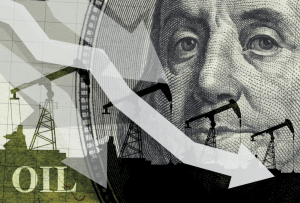Oil Prices Tumble Below $100 And Keep Falling. Here’s Why
Mar 15, 2022

On Tuesday, oil prices continued their decline, with West Texas Intermediate crude futures falling below $96 a barrel for the first time this month.
Prices have almost returned to prewar levels, as bullish traders have cashed in bets made before the rise began, and fresh money is hesitant to enter the market.
Chevron was down 5.6% and ExxonMobil was down 6%, on track for their biggest falls since June 2020. The SPDR Energy Select Sector ETF dropped 4.5%.
US crude oil finished Friday at $109 a barrel but has already lost over 10% this week. It surpassed $125 last week. Brent oil futures, the worldwide standard, fell over 6% Tuesday, to $99.60 a barrel, after nearly reaching $130 last week.
The selloff comes despite optimism over Russia-Ukraine cease-fire negotiations and as China put a lockdown on key industrial zones and millions of people, possibly lowering oil consumption.
"The chance of a diplomatic settlement to Russia's military intervention in Ukraine would help offset the planet's energy supply disruption, which has sent prices surging," comments Victoria Scholar, Interactive Investor's head of investing.
"On the demand side for oil, concerns over Beijing's forceful reaction to China's COVID-19 outbreak have increased the chances of much-reduced demand from the planet's second economy," she says.
Technical aspects are at play as well. Traders entered March with strong long bets on oil, anticipating a profit at futures prices over $100. There is a suggestion that a lot of them sold assets during the oil price increase. According to Bloomberg, open interest in oil stocks has reached its lowest point in six years.
The Relative Strength Index, a momentum indicator for the oil market that tracks price fluctuations, has plummeted to the mid-40s from highs around 80. A reading greater than 70 often implies that an item is overbought.
"When you reach 80, it indicates that the market has reached the end of its bull run," Robert Yawger, director of energy futures at Mizuho Securities, explains. "It was extended up way too much."
Other-product trading was even more extended, with heating oil's Relative Strength Index over 90 last week, according to Yawger. "I've been doing this for well over 30 years and can count on one hand the number of times I've seen anything above 90."
Yawger said that it is obvious that smaller traders who had been purchasing oil over $100 saw the turnaround and acted quickly to take "bailout" measures.
"There are certain fundamental explanations for this, there are also geopolitical factors, but positioning certainly plays a significant role in determining where this market goes," he adds.
Marshall Gittler, head of financial research at BDSwiss, adds that oil prices are not far from their levels a month earlier before the war in Europe began.
"OPEC and others have been stressing that there are no shortages of oil at the time, just the concerns of a potential scarcity," he says. "The price of oil in the future is not much different from what it was a couple of months ago."
Without a resolution to the Ukraine crisis, the next critical signal will be Wednesday's Energy Information Administration's weekly oil report, which will include data on US oil supply and demand.




